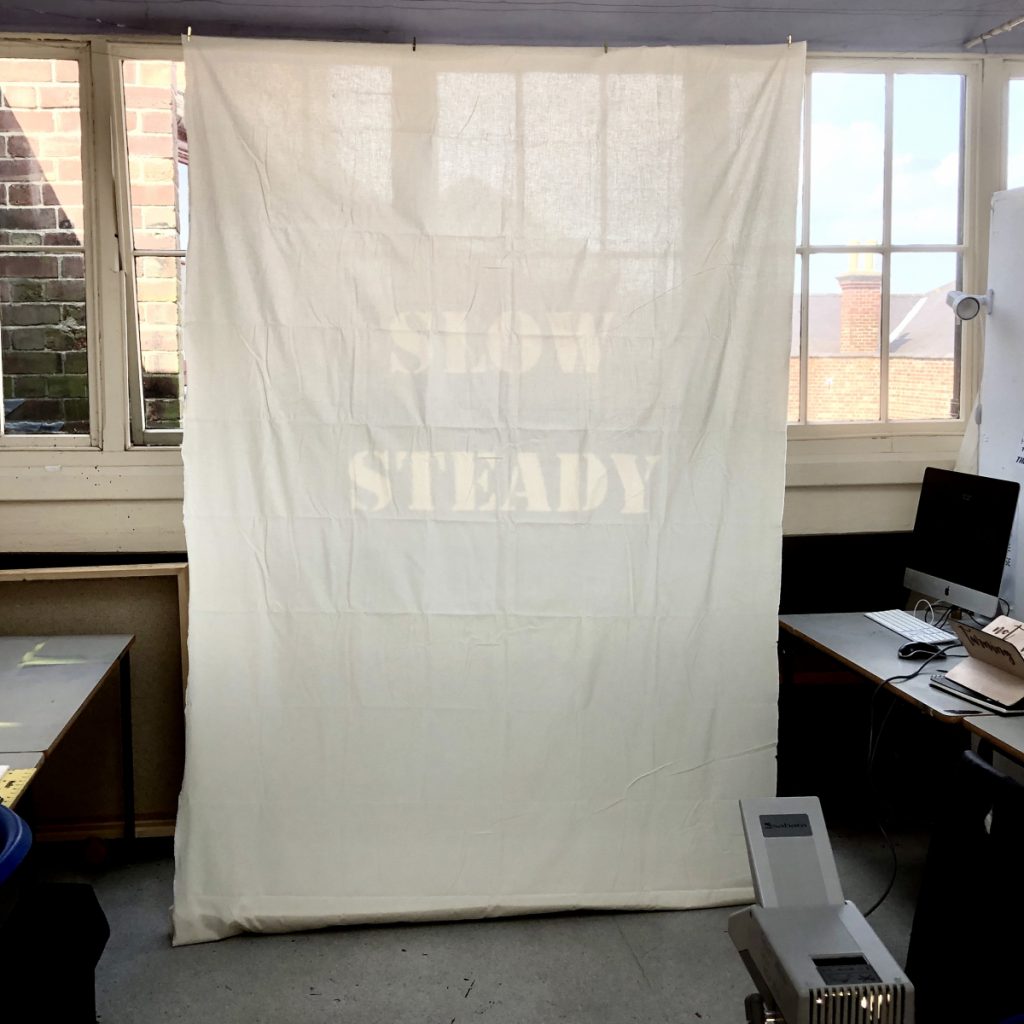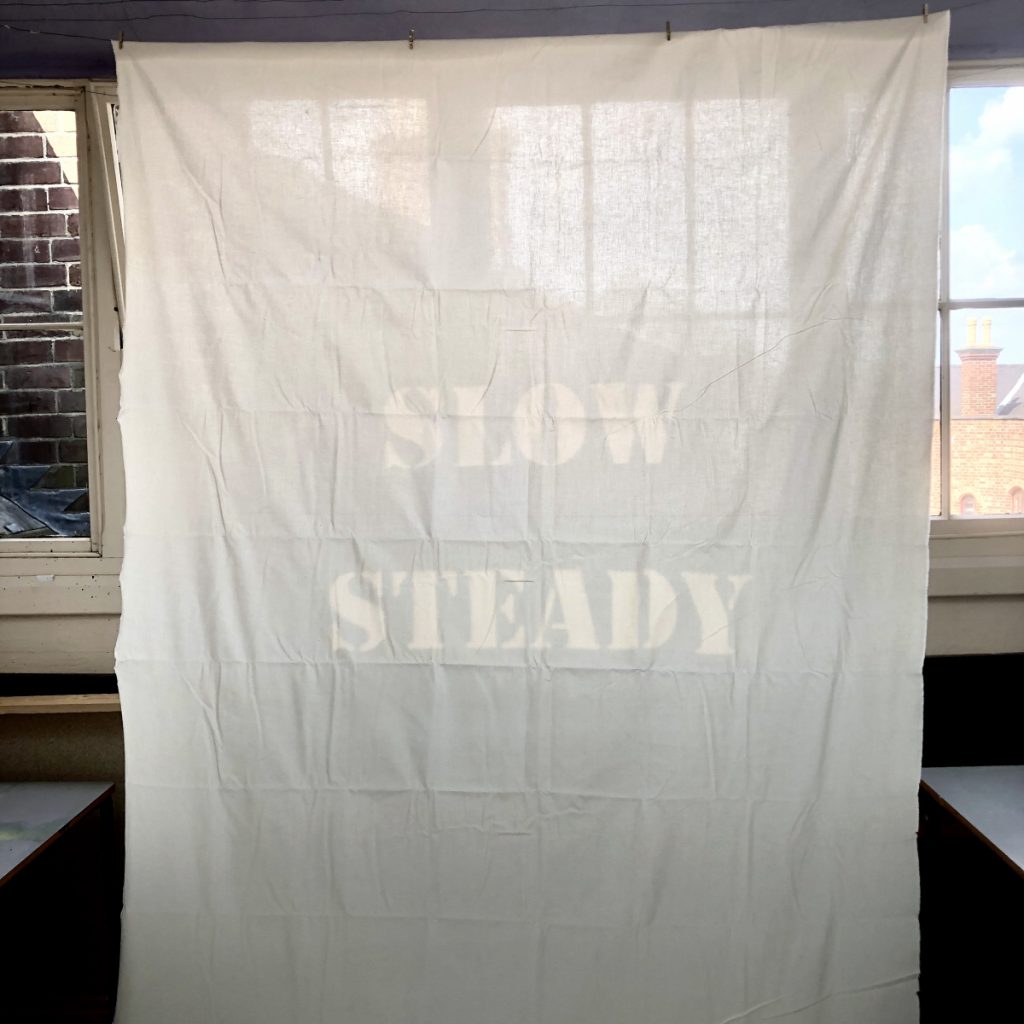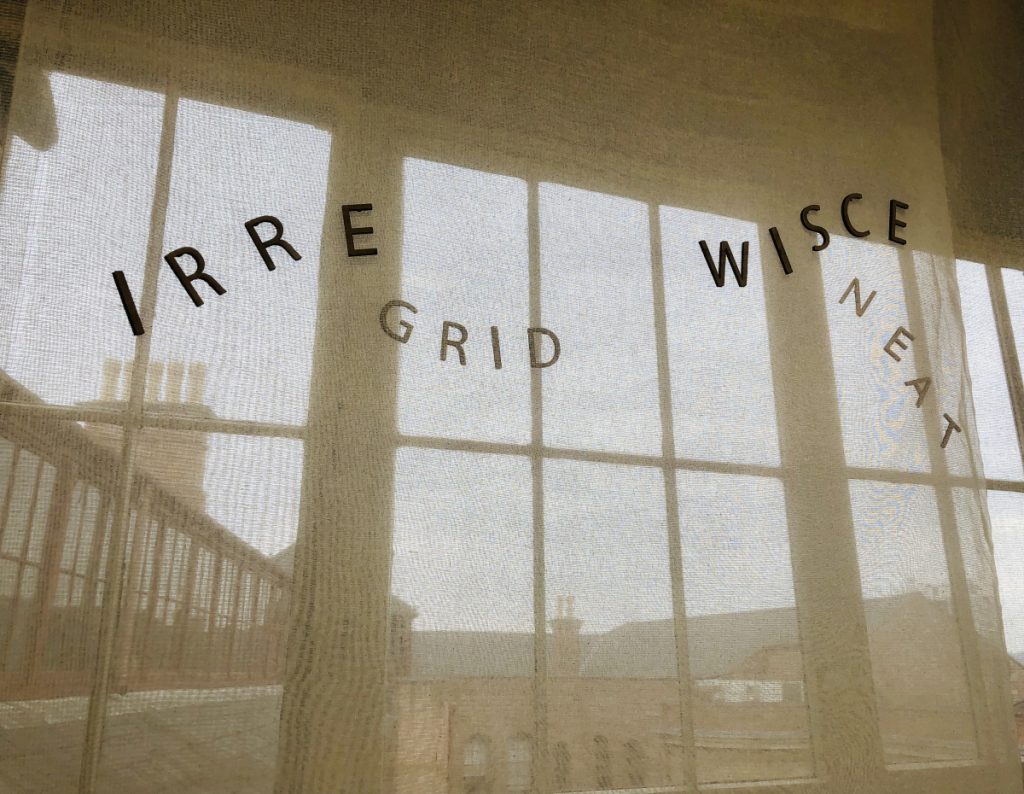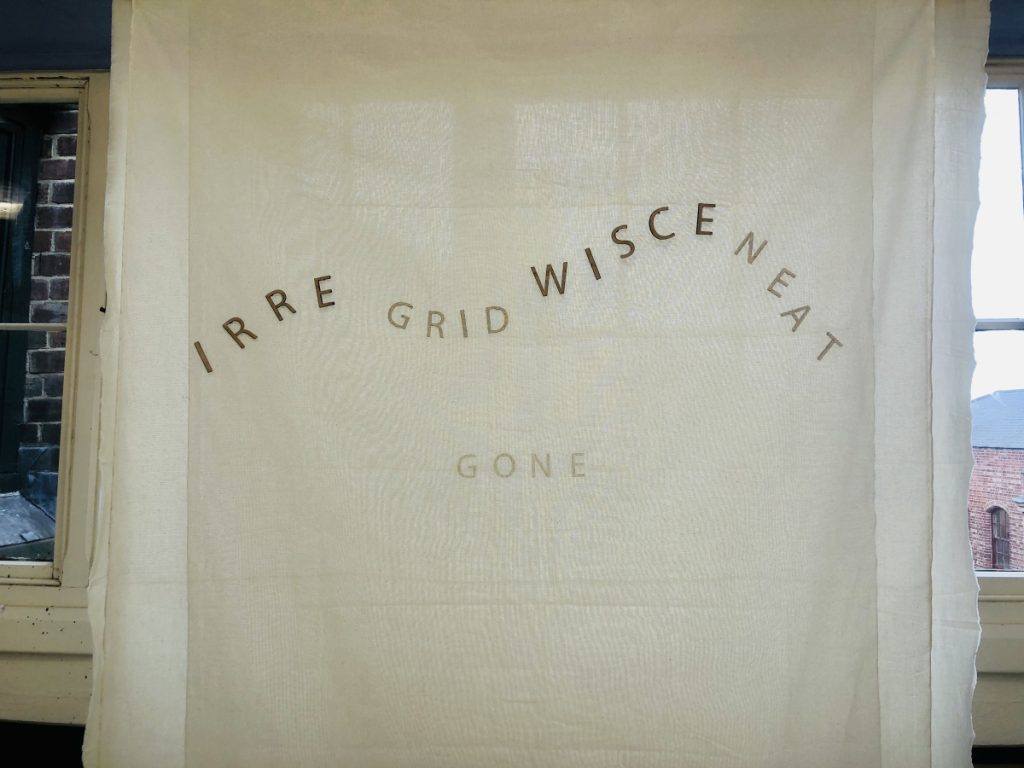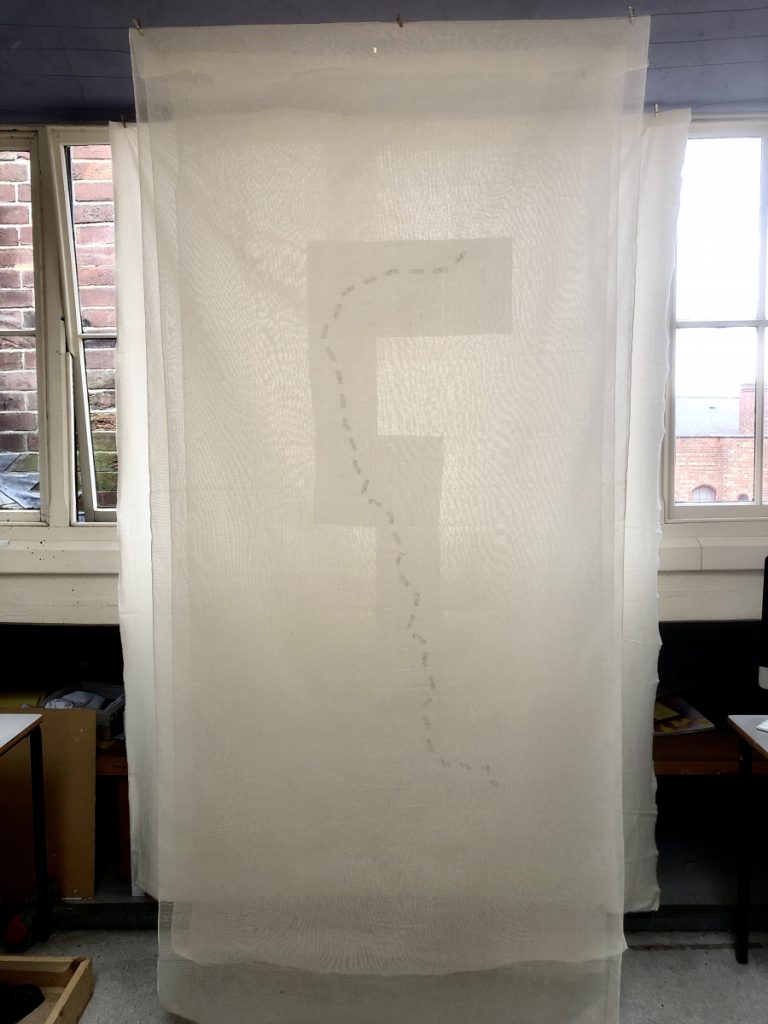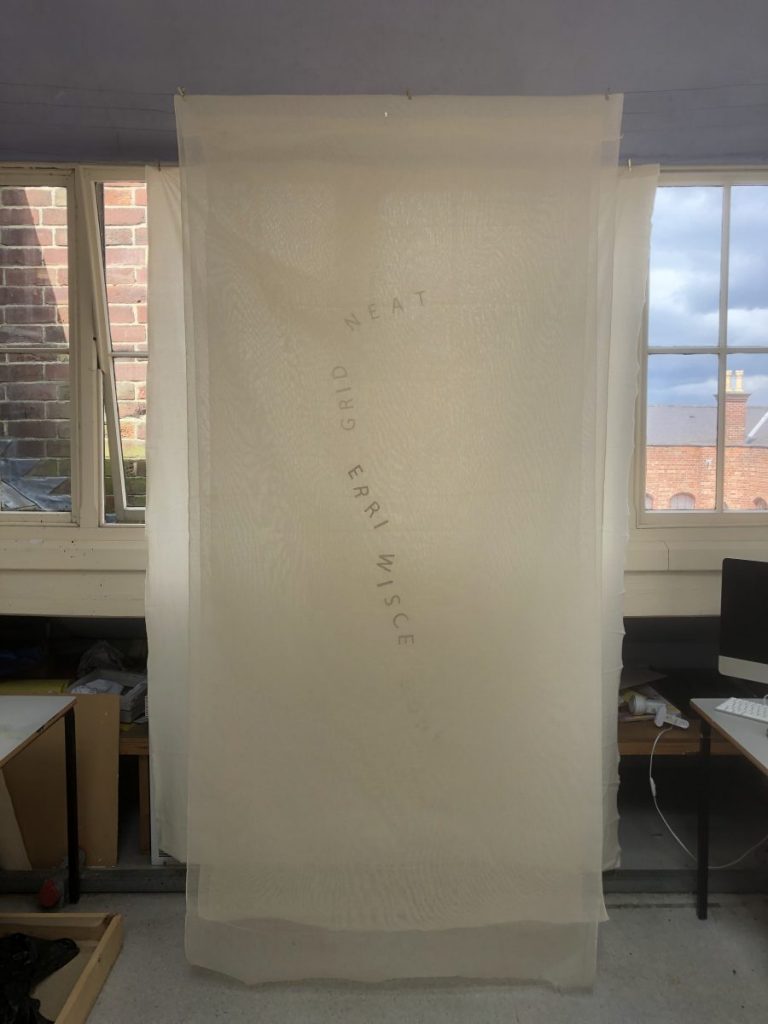In planning the presentation of my final outcome I firstly need to consider where the art resides. I’ve walked the length of the river, collected mud samples, created a set of water wheels and I will film the water wheels as a site specific interruption. What do I want the viewer to experience of this collection of artefacts or more importantly what will leave the most significant impression on them? I want the viewer to know that an event has taken place but I don’t want the historical record to dominate as I think the viewer needs to feel involved in a live experience rather than see something that a third party excluded them from. The ideal presentation will be a glimpse of the past that is linked to a dominant present.
The water wheels are the key component as they are the distillation of all my experiments and research so they will be central to the outcome. Therefore I need a booth to display these as they need a backdrop and I want to display other artifacts around them. The window in the studio offers a superb backdrop with its light and industrial heritage so below I have experimented with a variety of semi-opaque sheets suspended from wires.
The first option below was created using an overhead projector displaying text onto the back of a single sheet of canvas. It is subtle but I found that in bright sunlight (highly likely in June) the text is barely readable. So was I gaining anything from using a projector to display text that could have simply been printed on the canvas? I thought not and discounted this idea as viable.
Next, I projected a JavaScript animation of the words on the paddles on a suspended sheet and used an LCD projector behind the sheet. The words were inverted (to hide the white edge of the projection) and this is very effective and hypnotic as the words are suspended in space. However, once again the words were hardly visible in bright sunlight but most importantly with this idea I am merely duplicating the words on the paddles so I am adding nothing and using technology to merely distract the viewer from interacting with the main object. My gut feeling was that more was possible, something had to be taken away to add more intrigue.
Next, I evaluated a lo-fi solution of suspending several vertical sheets of semi-transparent fabric with text attached to the different layers. I used the laser-cut letters I already had and constructed suitable words for the two different sheets, IRRE WISCE (old English for Erewash) was on the top layer and the more clinical words of GRID and NEAT were on the lower layer. This arrangement had immediate visual appeal as the text on a path was mirroring the curvature of the river and added a sinuous contrast to the eventual inclusion of the engineered paddles.
Additional meaning had been created through the use of layers of material as these were either the metaphorical sedimentary layers of the river, the layers of history or the previous (forgotten) paths of the river. There are many options here to overlay text and have certain words fading into history. My peers commented on how effective this arrangement was and it reminded me that a lo-fi solution can look far more intentional than a superficially lazy technical solution. This idea was showing promise so I experimented more below.
Some still photographs of the same arrangement are below and I really enjoyed how the words distort as the viewer moves around the space, how they interact with each other and how they are juxtaposed against the view out of the window. In the lowest image, I added a third layer of more opaque canvas with a single word of GONE on it to test exactly how far I could stretch this idea in terms of layers. This was more promising still.
Finally, below I suspended a vertical trace of the route of the river as a way to install text on a path then attached the words on the 4 layers of material. The words I used were ERRI WISCE, GRID, NEAT, DISTANT, and GONE. I was fascinated by how I’d used the letters I’d chosen for the words on the paddles to make these new words, all of which had direct relevance to the nature of the project. This decision seemed to have been made for me so I saw no reason to come up with new words that had no context. I was very pleased with how this had come together.
Summary and next steps
The hanging of sheets as a backdrop to my installation is rich in meaning and will form a satisfying backdrop to the booth. The contrast between the softness of the material and the hard engineering of the waterwheels, set against the post-industrial view out of the window adds layers of juxtapositions out of which emerge a diversity of narratives. Further inclusions would only confuse the picture so the remainder of the booth will be plain white walls to create airiness and level of intent to draw the viewer in. Next, I need to consider how to hang both the sheets and waterwheels in the booth.
